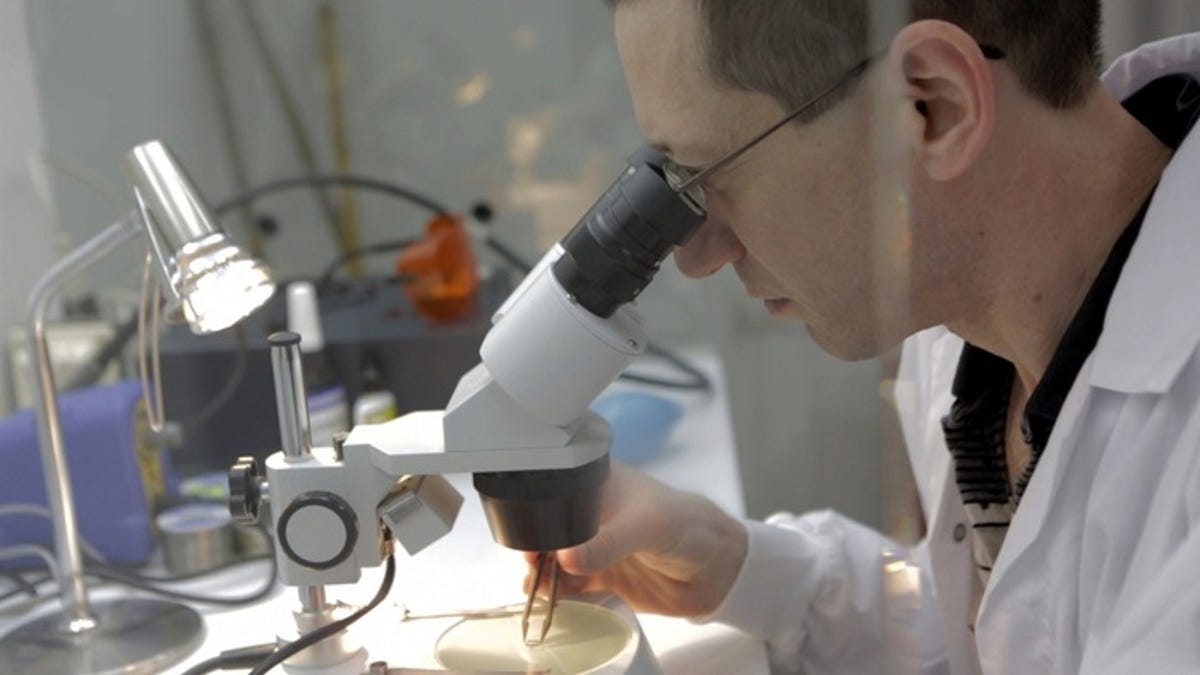Kickstarter science: beware the marketing hype
Yet another alleged "miracle" product has hit Kickstarter, but we're still some time away from a handheld food-analysing spectrometer.

(Credit: Consumer Physics)
Yet another alleged "miracle" product has hit Kickstarter, but we're still some distance away from a handheld food-analysing spectrometer that is useful on a meaningful level.
If you could have a little gadget that fit on your keyring that was able to analyse any substance just by pointing it and pressing a button, wouldn't you? It would be useful — you could scan your food for allergens, your drinks for spiking and even your medications to see exactly what's in them.
This is what a new product currently seeking funding on Kickstarter claims to do. Called the SCiO, it's a small, pocket-sized spectrometer that claims to be able to use near-infrared spectroscopy to analyse the molecular breakdown of plants, drugs, food and drink in real-time, sending the information via a cloud server to a smartphone app.
Near-infrared spectroscopy uses light to analyse molecular structure. A light is shone on an object, and the wavelengths bounce back into the scope and are recorded. Each molecular structure has its own wavelength "signature", which allows science and medical professionals to analyse different substances.
If SCiO works as claimed, it will be a very big deal indeed (last year's crowdfunded spectrometer, the TellSpec, had some production hiccups). Although portable spectrometers exist, they're nothing even close to the size — or the low US$200 price point — of the SCiO.
Its creator, a company called Consumer Physics operating out of Tel Aviv, Israel, says it has been working on the device for three years. "The spectrometers which are normally used for these high-end near-IR spectroscopy applications are very big and expensive. They can be the size of a laptop and cost tens of thousands of dollars," the team wrote (it is worth noting that spectrometers can be much bigger than a laptop). "SCiO is unique as it is based on a tiny spectrometer, designed from the ground up to be mass-produced at low cost with minimal compromise on the available application. This unique feature is achieved by several technology breakthroughs our team has made in the past few years, as we reinvented the spectrometer around low-cost optics and advanced signal processing algorithms."
The technology is plausible and exciting, but one would expect a breakthrough of this nature would easily be able to receive funding. It definitely raises some red flags, but most people, we would guess, do not know very much about spectroscopy or the equipment it requires. So we asked someone who does.
"It looks quite interesting from the website information, but I think they are slightly overstating the capabilities of the instrument in their marketing. Although I should stress I am only going from the website data," said Dr Oliver Jones, lecturer in analytical chemistry at RMIT University's School of Applied Sciences.
"Using near-IR spectroscopy to provide molecular analyses of substances such as food and pharmaceuticals is not new, I do it in my lab almost every day (or rather my students do). The small optical sensor is cool, but making an IR spectroscope is detailed on a number of websites, for example here or here or many others found with Google. In this case I think they have sacrificed sensitivity for size, which is why all the data analysis goes on via their server via the internet and then gets sent to your phone. I think the spectra that the instrument generates are not particularly detailed, which is why what comes out is also not that detailed."
He adds that much of the data provided for the analysis seems to come from the user, and the rest could be based on algorithmic guesswork.
"For example both alcohol (ethanol) and water produce large peaks on an IR spectrum and from the video it would seem that the user provides some background data on what the sample is via the app, so that saves a lot of work. It would be easy for the algorithm to say, 'the user says this is drink and I can see that about 40 per cent of the total spectrum is ethanol so I should give a reading of alcoholic beverage with 40 per cent alcohol content'. Or 'this is a plant and 70 per cent of the spectrum is water so it must be 70 per cent hydrated'. This could also be done with total sugar content for common sugars such as sucrose and fructose," he said.
"Similarly, it would be possible to get a spectrum good enough to recognise something like fruit or Tylenol and then send back generic data (easily found via Google) on calorie content or pack size. For example on the fruit 'reading' on the website it has in the bottom right (in small print) 'serving size 100 grams' (same with the cheese detection screen)."
A quick background Google on the two principal figures of Consumer Physics checks out. Co-founders Damian Goldring and Dror Sharon both have backgrounds in optical engineering, so we believe that the SCiO does exist — but not that it can necessarily be used for anything meaningful, particularly if it's using a database to provide the end user with a breakdown of information.
We also noticed that the Consumer Physics team was declining to answer some of the more detailed technical spectroscopy questions being asked by Kickstarter backers in the SCiO campaign's comment section — which would indicate that the device may only be useful for play rather than any serious application.
Dr Jones came to a similar conclusion. "There is no detailed analysis of each sample so while I think the data they give is certainly interesting it is really only for fun. I don't think you could use this in a commercial setting," he said. "I don't think this is a hoax, but it's not a scientific breakthrough either."

